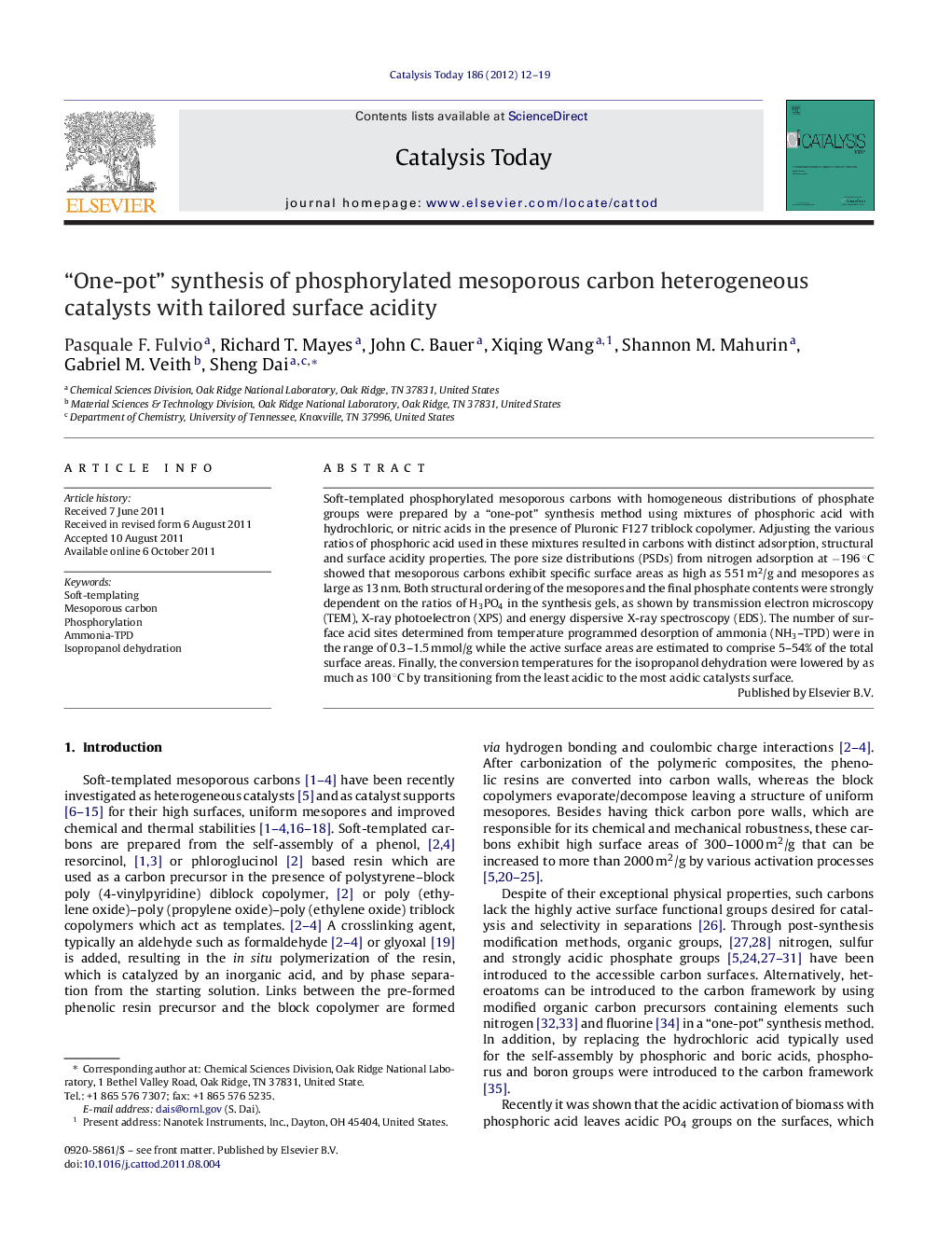| Article ID | Journal | Published Year | Pages | File Type |
|---|---|---|---|---|
| 55476 | Catalysis Today | 2012 | 8 Pages |
Soft-templated phosphorylated mesoporous carbons with homogeneous distributions of phosphate groups were prepared by a “one-pot” synthesis method using mixtures of phosphoric acid with hydrochloric, or nitric acids in the presence of Pluronic F127 triblock copolymer. Adjusting the various ratios of phosphoric acid used in these mixtures resulted in carbons with distinct adsorption, structural and surface acidity properties. The pore size distributions (PSDs) from nitrogen adsorption at −196 °C showed that mesoporous carbons exhibit specific surface areas as high as 551 m2/g and mesopores as large as 13 nm. Both structural ordering of the mesopores and the final phosphate contents were strongly dependent on the ratios of H3PO4 in the synthesis gels, as shown by transmission electron microscopy (TEM), X-ray photoelectron (XPS) and energy dispersive X-ray spectroscopy (EDS). The number of surface acid sites determined from temperature programmed desorption of ammonia (NH3–TPD) were in the range of 0.3–1.5 mmol/g while the active surface areas are estimated to comprise 5–54% of the total surface areas. Finally, the conversion temperatures for the isopropanol dehydration were lowered by as much as 100 °C by transitioning from the least acidic to the most acidic catalysts surface.
Graphical abstract. Highly active acid catalysts supported on mesoporous carbon were successfully synthesized and tested for dehydration reaction.Figure optionsDownload full-size imageDownload high-quality image (279 K)Download as PowerPoint slideHighlights► Mesoporous carbons containing phosphate sites and tailored surface acidity. ► Adsorption and structural properties modified by phosphoric acid ratios. ► Number of surface phosphate sites determined by phosphoric acid ratios in synthesis. ► Control over activity for isopropanol dehydration and conversion temperatures.
